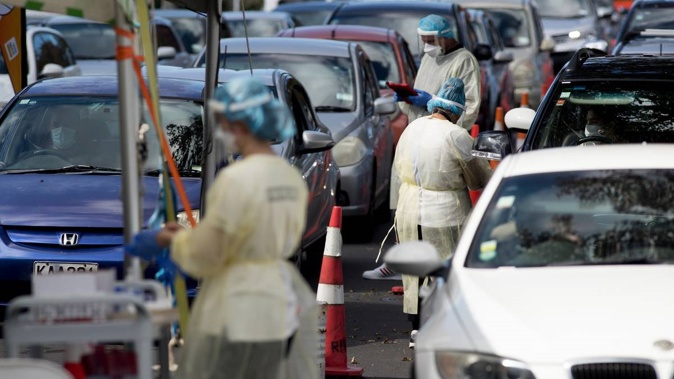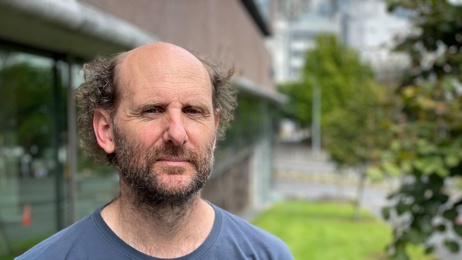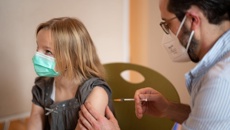
New Zealand could hit 10,000 daily cases of Covid-19 earlier than previously anticipated as the Omicron variant continues its rapid spread.
Meanwhile, a leading doctor says the current Covid-19 home isolation rules are overkill and need to be cut to three days for vaccinated people without symptoms.
Yesterday, the country notched up a new daily high of 2522 Covid cases, with a record 100 people in hospital, up from 76 on Saturday. The previous hospitalisation record of 93 came deep into the Delta outbreak last November.
Covid-19 modeller Dr Dion O'Neale said case numbers were doubling every three to four days.
"The numbers will be scary but they're not unanticipated," he said.
Given the rate at which cases are doubling, O'Neale said there's a chance 10,000 cases may be recorded in a week's time.
"Hopefully we are not 10,000 cases in a week's time but with 2500 today, it's possible we could be there," he said.
Last week, University of Otago epidemiologist Michael Baker said the country was on track to see 10,000 Covid-19 infections a day by mid-March. However, he said even if we did reach the 10,000 predicted cases, we may not actually see them due to a lack of testing capacity.
'Cut household isolation to three days'
Council of Medical Colleges chair John Bonning has joined calls to reduce the isolation period from the current 10 days for household contacts.
Combined with high vaccination rates, Omicron was causing much less serious illness among vaccinated people and that meant some changes could be made, he said.
"I'm still in favour of fairly widespread testing but [not] just locking people up in their homes for 10 days not able to go to work - this will be nurses, teachers, people who work in the food industry," he said.
Dr Bonning was clear that many public health measures needed to stay, and any changes should be step by step.
Vaccine mandates were still crucial to protect people, particularly vulnerable populations, and mask-wearing must stay, he said.
But there was some sensible middle ground that could help to keep the country moving and prevent workplaces having a quarter of their staff at home isolating, Dr Bonning said.
"I don't want it to be a wild swing across to 'right let's just abandon everything and go about life completely as normal tomorrow' but it's about being agile," he said.
The response to this point had been the right one, he said.
"We've done a wonderful job to get to this point with saving lives, protecting our communities, to get so highly vaccinated, and the lowest death rate in the world virtually."
He agreed with GP leader Bryan Betty who was advocating for a change in mindset about Covid-19 because of the Omicron variant because for most people it would be a mild to moderate illness.
He favoured not reporting daily case numbers anymore, instead reporting hospitalisation rates.
"It's about reducing some of the anxiety that's built up over the last few years," he said.
"I'm not talking about people going out there and intentionally getting it either, but it's just nowhere near as bad as Delta and it's part of our path out of the pandemic," he said.
'Rolling carousel' of kids coming in and out of isolation
President of Auckland Primary Principal's Association Stephen Lethbridge told AM there would be a significant number of children who would be isolating at home today especially with more than 1700 cases yesterday in the Auckland area alone.
There would be a "rolling carousel" of children coming in and out of isolation, staying at home and coming back to school.
Schools had remote learning packs on hand and online learning portals children could access.
If a whole class had to isolate, then all of the learning would probably move into online learning. "It's also really good to have kids at school... it's important for the kids to be back at schools."
Lethbridge said some air purifiers had been delivered to schools, but the best form of protection was open windows and doors and trying to create a cross breeze coming through classrooms. It was also really crucial kids were masked up from year 4 and social distancing was enforced with some schools splitting break times.
With winter coming, schools were also gathering data about which classrooms were poorly ventilated so they could rectify these issues, he said.
Lethbridge said they had had really good conversations with the Ministry of Education so they had what they needed to deal with the challenges ahead.
He said vaccinations did help and they supported the Government's advice to get children vaccinated.
In terms of whether unvaccinated kids could play sports, then that was up to each organisation in the community to set those rules and those rules needed to be followed.
Speaking on the mandate for school staff, he said it was always hard to justify having unvaccinated people in front of our most vulnerable people. They are put in place to keep people safe, he said.
Breakdown of latest cases
The majority of yesterday's new cases — 1799 — were in Auckland, but cases are growing rapidly in other areas.
There are 188 in Waikato, 111 in the Southern DHB area, 86 in Bay of Plenty, 53 in Nelson Marlborough and 54 in Capital and Coast.
Other cases were recorded in Northland (41), Canterbury (76), Hutt Valley (25), Hawke's Bay (24), MidCentral (13), Lakes (11), Wairarapa (14), Tairāwhiti (12), Taranaki (9) and Whanganui (2) and South Canterbury (1). Three other cases are in an unspecified location.
Meanwhile, from today, Aucklanders needing a test may be given a rapid antigen test (RAT) when attending swabbing stations.
The Ministry of Health said the clinical assessment will look at factors such as the reason for testing like symptoms and whether the person is a close contact.
From there, those who meet certain criteria will be able to test themselves at home with a RAT to get an indication of whether or not they have Covid-19. Those who test positive will then need to return to a testing centre to get a more comprehensive PCR test.
While PCR testing remains the "definite" method of confirming a person has Covid-19, Matt Hannant, director of operations for the Northern Region Co-ordination Centre, said the use of RATs would take the pressure off laboratories and testing stations.
"Demand on community testing centres across Auckland has remained high, and we need to conserve PCR testing capacity to support those who need it the most," Hannant said.
Baker welcomed the wider use of RATs. "We've known that the testing capacity in New Zealand has been very good and sufficient for the last two years.
"It's now at the point of being saturated.
"Very quickly you are going to have too many people who are basically testing positive every day for our current testing system that relies on the very high-quality PCR test."
Of those in hospital, 45 are at Auckland, 30 at Middlemore, 10 at North Shore, 11 at Waikato, one at Tauranga and one each at Northland, Rotorua and Tairāwhiti. Their average age is 56.
Given the delay between testing results and hospitalisation, O'Neale said the country will pass the peak of cases before the peak of hospitalisations.
Take your Radio, Podcasts and Music with you









